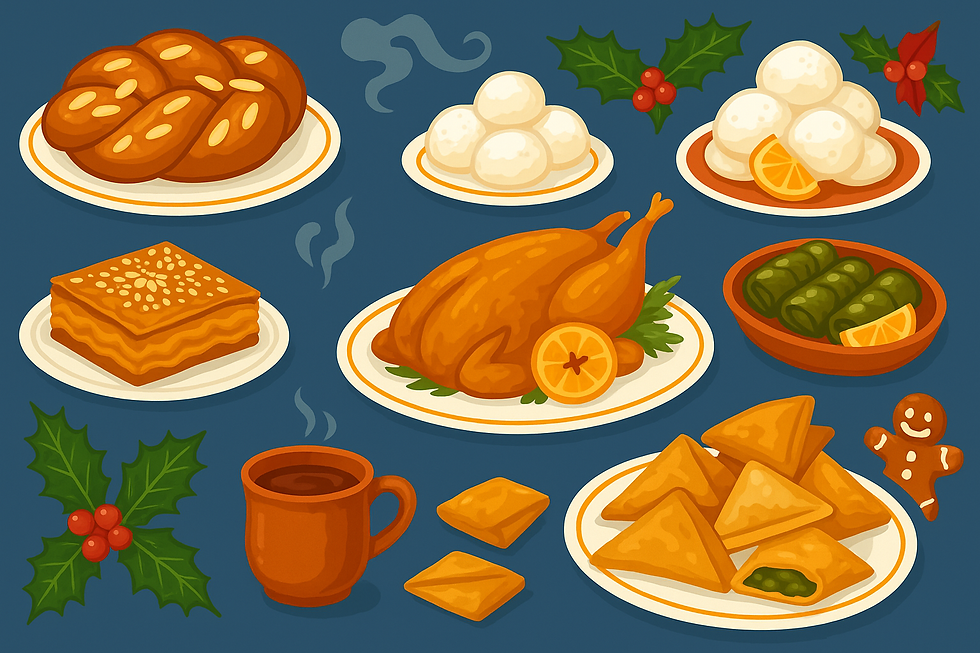7 Common Menu Mistakes to Avoid
- Ariston Foods Ltd
- Oct 30
- 3 min read
Updated: Nov 7

A well-designed menu does more than list items, it shapes the way customers see your brand and what they order. But even small missteps can hurt sales or create confusion. Whether you run a cozy coffee shop or a busy takeaway, here are seven menu mistakes to watch out for.
1. Overloading the Menu with Too Many Items
Trying to cover every possible taste often results in clutter. A coffee shop offering 25 different latte flavors overwhelms guests and slows service. Research from Cornell University’s School of Hotel Administration found that too many choices increase “decision fatigue,” reducing satisfaction and average spend. Stick to your bestsellers and rotate seasonal specials to keep things focused and easy to navigate.
Source: Cornell University, “Menu Psychology and Design,” 2020
2. Poor Readability
Tiny fonts, busy backgrounds, or weak contrasts (like yellow text on beige paper) make menus frustrating. Takeaway flyers are especially at risk - if people can’t read your menu in a glance, they won’t order. Menu engineers at the Culinary Institute of America recommend fonts no smaller than 12 pt for print and clear sans-serif typefaces for digital menus. Use consistent sizes and plenty of white space.
Source: The Culinary Institute of America, Menu Design Principles, 2021
3. Ignoring Pricing Strategy
Lining up prices in a neat column pushes customers to choose the cheapest. A takeaway pizza list like “Margherita £7.50 … Pepperoni £8.00 … Special £8.50” trains eyes to scan for cost, not quality. Menu engineers like Gregg Rapp suggest avoiding “price ladders” and using descriptive text to add perceived value. Break things into categories, or highlight value bundles, so the focus is on dishes, not just numbers.
Source: Gregg Rapp, Menu Engineering: The Science of Menu Design, Restaurant Business Online
4. Forgetting About Branding
Menus without a sense of identity feel forgettable. Coffee shops benefit from design that reflects their vibe, earthy tones for artisanal cafés, playful colors for urban takeaways. According to Upserve by Lightspeed’s Restaurant Trends Report, menus consistent with brand colors and typography boost recognition and repeat visits by up to 20%. A bland, generic menu looks like it could belong to anyone, and customers notice.
Source: Upserve by Lightspeed, Restaurant Branding Report, 2023
5. Not Updating Regularly
Outdated items frustrate customers. A coffee shop advertising a “Pumpkin Spice Latte” in April, or a takeaway still listing dishes you no longer serve, gives the impression of neglect. Restaurant Business Magazine reports that 45% of diners associate outdated menus with poor management. Seasonal refreshes keep your menu aligned with your kitchen and your story.
Source: Restaurant Business Magazine, Menu Management Insights, 2022
6. Missing Dietary Signposting
In today’s dining culture, many customers look specifically for vegan, vegetarian, gluten-free, or plant-based options. A menu without clear icons or notes risks losing those orders. Surveys by The Food Standards Agency (UK) show that over 60% of customers look for dietary information before ordering. A coffee shop pastry menu without a simple “V” or “GF” marker might make a guest skip a purchase because they’re unsure. Simple icons remove doubt and make people feel considered.
Source: UK Food Standards Agency, Eating Out Consumer Research, 2023
7. Weak or Confusing Section Titles
The way you group and label categories matters. Calling everything “Specials” or “Chef’s Choices” without clarity doesn’t guide customers. In a takeaway, having “Mains” mixed with “Combos” and “Deals” but no clear explanation can confuse. Menu engineering research from NielsenIQ found that clear, intuitive headings improve order speed and upselling success. Strong, descriptive titles like Wraps & Panini, Hot Coffees, or Plant-Based Treats make the menu user-friendly and increase sales.
Source: NielsenIQ, Food & Beverage Insights Report, 2024
👉 Takeaway
Beyond design basics, menus need clear signposting, relevant titles, and regular care. Avoiding these common mistakes makes your menu not just a list, but a guide that leads customers to the right choice, and keeps them coming back.




Comments